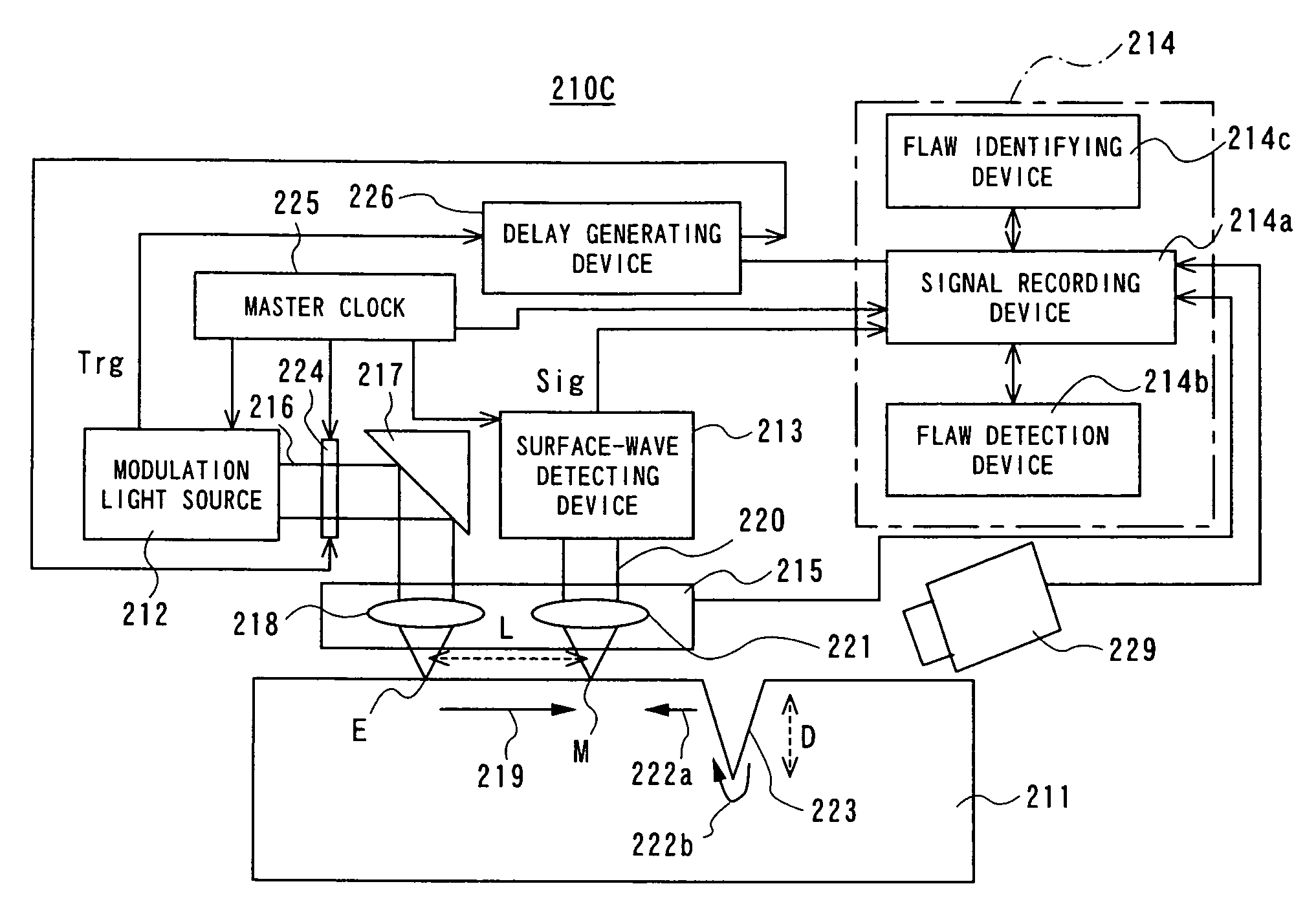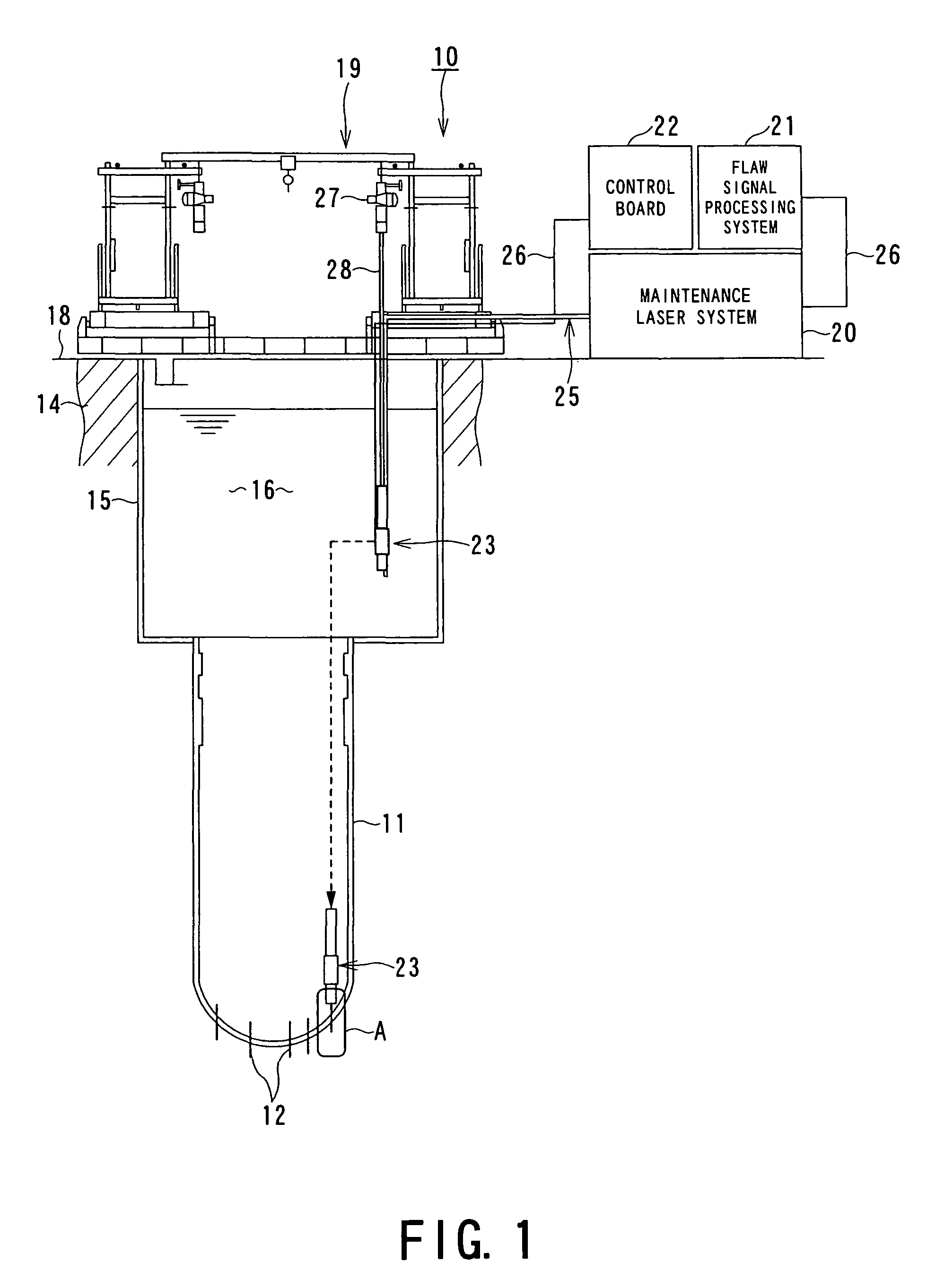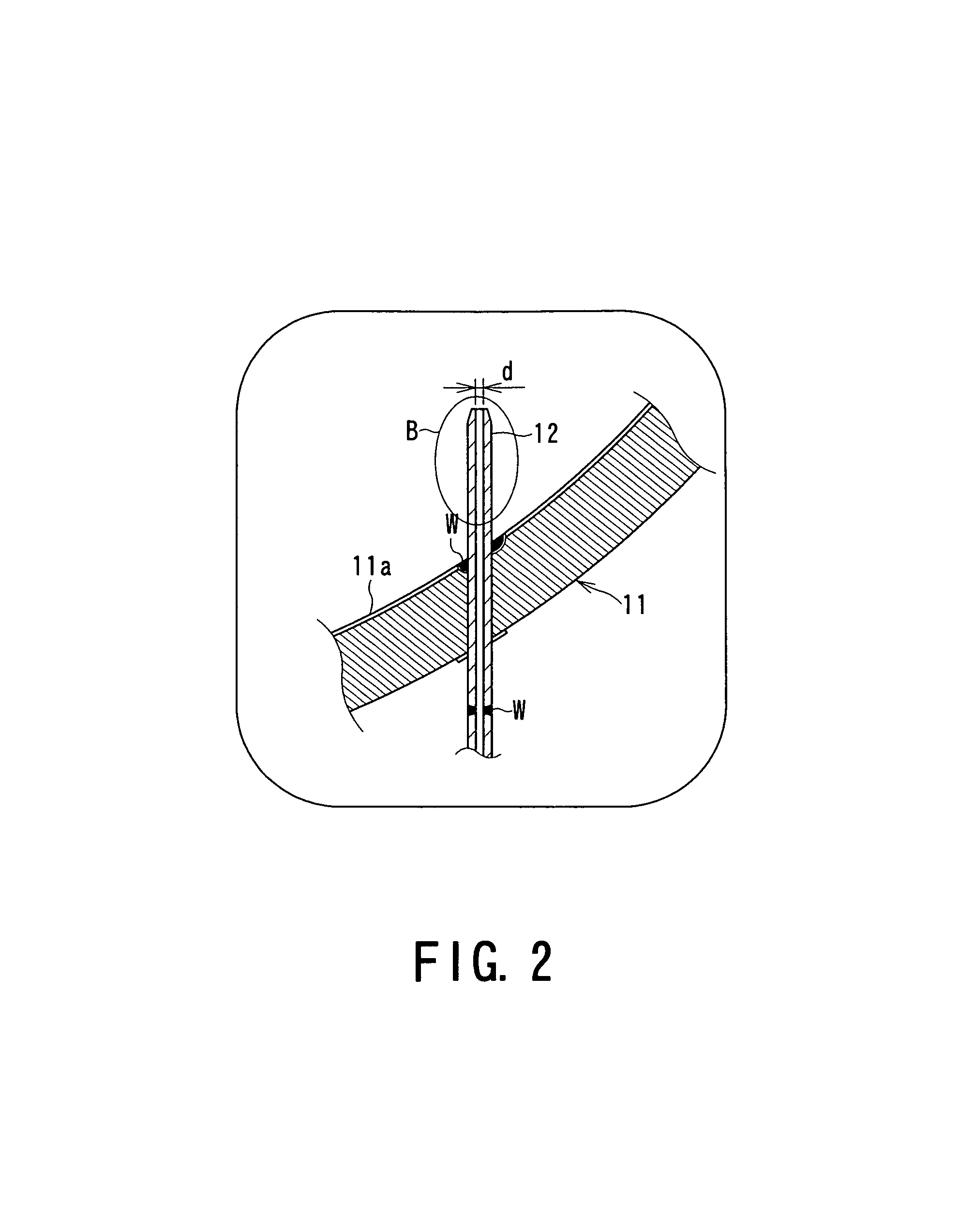Laser-based maintenance apparatus
a maintenance apparatus and laser technology, applied in the direction of instruments, specific gravity measurement, greenhouse gas reduction, etc., can solve the problems of increased costs, noise and crack depth measurement, and no proposal for an overall system, so as to reduce the recording time of surface-wave signals, reduce the storage capacity of recording, and reduce the effect of flaw analysis and detection tim
- Summary
- Abstract
- Description
- Claims
- Application Information
AI Technical Summary
Benefits of technology
Problems solved by technology
Method used
Image
Examples
fifth embodiment
[0625]FIG. 38 is a block diagram illustrating the entire configuration of a fifth embodiment of a laser ultrasonic inspecting device 210C of the present invention. In this laser ultrasonic inspecting device 210C, a surveillance camera 229 is provided to the laser ultrasonic inspecting device 210A according to the second embodiment shown in FIG. 34.
[0626]The surveillance camera 229 is principally for imaging the test object 211, the scan surface to be scanned over the surface thereof and a surface inspecting working, recording the imaged signal to the signal recording device 214a, and displaying the recorded signal on a display screen. The image-captured (imaged) signal may be generated to the remote-monitoring device 228 shown in FIG. 37 via the signal recording device 214a so that the captured image is displayed on the display screen.
[0627]That is, generally, as for the procedures of the surface inspection of the test object 211, visual inspection prior to implementation and visual...
sixth embodiment
[0630]FIG. 39 is a schematic diagram illustrating the configuration according to a sixth embodiment of a laser ultrasonic inspecting system 230 of the present invention. In this laser ultrasonic inspecting system 230, either one of the above laser ultrasonic inspecting devices 210, 210A, 210B, and 210C is disposed in a container 231, and one or more air conditioners 232 serving as one example of a temperature controller are also disposed in this container 231.
[0631]According to this laser ultrasonic inspecting system 230, the temperature and humidity in the container 231 can be controlled in the temperature and humidity suitable for either one of the laser ultrasonic inspecting devices 210, 210A through 210C by the air conditioners 232 and 232, and therefore, particularly even in an environment of high heat and high humidity such as in the summertime, the laser ultrasonic inspecting devices 210, and 210A through 210C can be normally operated, thus ensuring the precision and quality ...
seventh embodiment
[0632]FIG. 40 is a schematic diagram illustrating the configuration of a seventh embodiment of a laser ultrasonic inspecting system 230A according to the present invention. In this laser ultrasonic inspecting system 230A, either one or more, two, for example, of the laser ultrasonic inspecting devices 210, 210A, 210B, and 210C are classified into an optical system 210L including an optical system such as a laser light-resource, and an electric system 210E including the other control systems other than the optical system, which are accommodated within containers 231L and 231E, respectively. The electric system containers 231E are stacked on the respective optical system containers 231L and erected in two layers on the floor F.
[0633]The optical system mentioned herein may include the modulation light source 212, a surface-wave detecting device 213, a scanner 215, an irradiation optical system 217, a lens system 218, and a shutter device 224. The electric system mentioned herein may in...
PUM
| Property | Measurement | Unit |
|---|---|---|
| oscillation energy | aaaaa | aaaaa |
| frequency | aaaaa | aaaaa |
| frequency | aaaaa | aaaaa |
Abstract
Description
Claims
Application Information
 Login to View More
Login to View More - R&D
- Intellectual Property
- Life Sciences
- Materials
- Tech Scout
- Unparalleled Data Quality
- Higher Quality Content
- 60% Fewer Hallucinations
Browse by: Latest US Patents, China's latest patents, Technical Efficacy Thesaurus, Application Domain, Technology Topic, Popular Technical Reports.
© 2025 PatSnap. All rights reserved.Legal|Privacy policy|Modern Slavery Act Transparency Statement|Sitemap|About US| Contact US: help@patsnap.com



